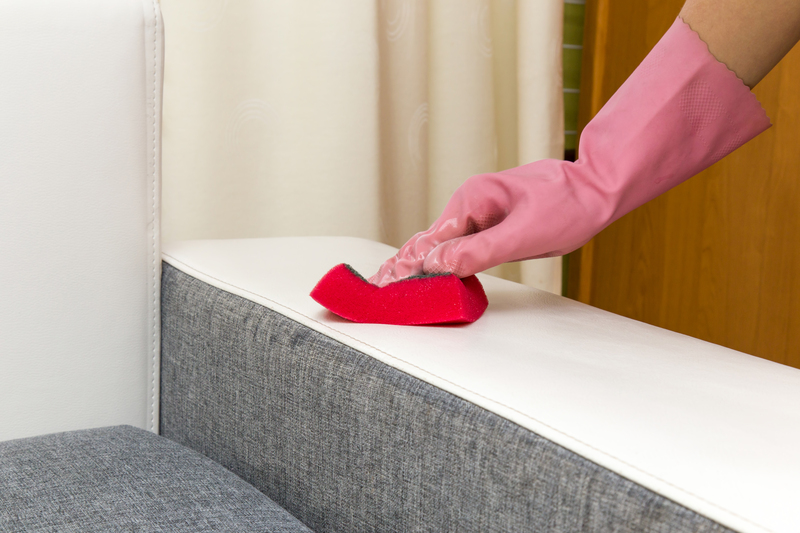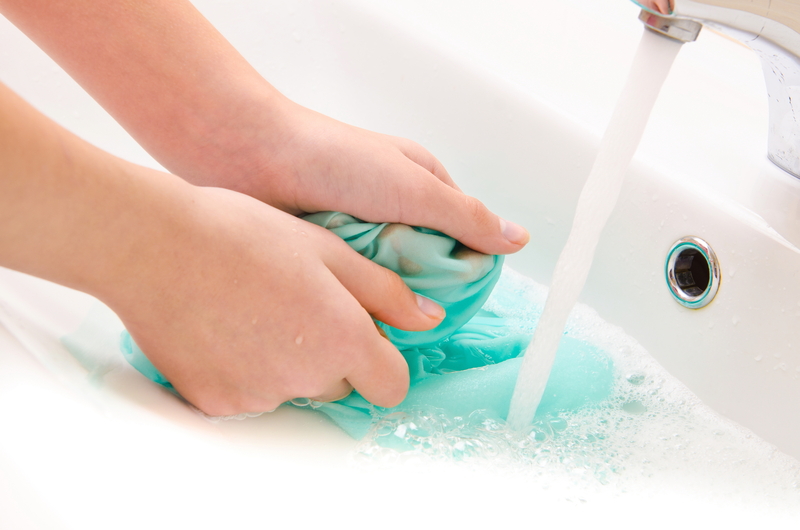Mould Fighting Strategies for Cleaner Window Sills
Posted on 02/07/2025
Mould Fighting Strategies for Cleaner Window Sills
Window sills are often overlooked areas that, when neglected, become breeding grounds for unsightly and unhealthy mould growth. Mould not only mars the beauty of your windows but also poses significant health risks, especially for those with allergies or respiratory conditions. Fortunately, with effective prevention and removal tactics, you can keep your window sills spotless and your indoor air quality top-notch. In this comprehensive guide, we delve into mould-fighting strategies for cleaner window sills, share actionable prevention tips, recommend removal techniques, and offer advice for long-term protection.
Understanding Window Sill Mould: Why It's a Persistent Problem
Mould thrives in damp, poorly ventilated environments--characteristics that often describe the area around windows. Whether you live in a rainy climate or simply deal with condensation on glass, window sill mould can appear quickly and stubbornly return if not addressed correctly.
Why Does Mould Grow on Window Sills?
- High Humidity: Bathrooms, kitchens, and any room lacking adequate ventilation can create the perfect environment for mould.
- Condensation: Moisture collects on cold surfaces like glass and frame junctions, then drips or seeps onto the sill below.
- Poor Insulation: Inadequate insulation in walls or windows increases temperature differences, resulting in water vapour settling on sills.
- Neglect: Infrequent cleaning allows organic material--such as dust, pollen, or dead insects--to accumulate, providing "food" for mould.

How Does Mould Affect Health and Home?
Window sill mould is not just an aesthetic issue. Exposure to indoor mould can lead to several health problems, particularly in vulnerable individuals. Here are some common risks associated with indoor mould:
- Respiratory problems such as coughing, wheezing, and even asthma attacks.
- Allergic reactions--sneezing, itchy eyes, and skin irritation.
- Structural damage to window frames and sills from persistent moisture and fungal growth.
Understanding these risks underscores the importance of mould elimination strategies for every household.
Preventive Mould Fighting Strategies for Window Sills
1. Boost Ventilation
- Open windows regularly to allow fresh air to circulate.
- Use exhaust fans in bathrooms and kitchens to reduce indoor humidity.
- Consider trickle vents on windows for continuous airflow.
- Avoid blocking window sills with heavy curtains or blinds.
2. Control Humidity Levels
- Keep indoor humidity below 60%. The ideal range is 30-50% to discourage mould spores.
- Invest in a dehumidifier for damp-prone rooms.
- Promptly address water leaks or plumbing issues near windows.
3. Improve Insulation
Upgrading your windows with double glazing or adding thermal blinds can significantly reduce condensation, limiting the potential for moisture accumulation on sills.
4. Frequent Cleaning Routine
- Dust and wipe window sills weekly using a damp microfiber cloth.
- Include window frames and corners where mould can easily hide.
- Use mild soap or a vinegar-water solution for regular maintenance.
5. Remove Clutter from Sills
Knick-knacks, potted plants, or books can trap moisture and dust, feeding mould growth. Keep sills clear to improve airflow and make cleaning easier.
Effective Techniques for Removing Mould from Window Sills
If you spot patchy black, green, or white spots on your window sills, acting swiftly is crucial to prevent spreading. Here are step-by-step strategies for cleaning mouldy window sills:
Step 1: Safety First
- Wear protective gloves, goggles, and a mask to avoid direct exposure.
- Open nearby windows and doors for ventilation during cleaning.
- Place plastic sheets or towels below the sill to catch any debris.
Step 2: Remove Loose Mould
- Use a soft brush or vacuum with a HEPA filter to gently remove loose mould spores.
- Dispose of vacuum bags or filters promptly to prevent spores from spreading.
Step 3: Apply Cleaning Solutions
The choice of cleaning solution depends on your window sill material:
- Vinegar Solution: Mix equal parts white vinegar and water in a spray bottle. Spray generously, let it sit for 1 hour, then scrub and wipe clean.
- Baking Soda Paste: For stubborn patches, mix baking soda with water to form a paste and apply directly. Allow to rest for 10-15 minutes, scrub, and rinse.
- Hydrogen Peroxide (3%): Spray onto the affected area; leave for 10 minutes, then wipe down. Do not mix with vinegar or bleach.
- Commercial Antifungal Sprays: These are available for more severe infestations but should be used with care, especially around children and pets.
Step 4: Scrub and Rinse
- Use a non-abrasive scrubbing brush for painted or wooden sills.
- Wipe with a clean, damp cloth to remove all residue.
- Dry thoroughly with a towel to prevent future regrowth.
Step 5: Disinfect and Dry
- For added protection, spray the area with rubbing alcohol or a diluted bleach solution (if safe for the surface).
- Allow the sill to dry completely before closing windows or replacing any items.
Special Considerations by Sill Material
Wooden Window Sills
- Minimise water use to prevent wood warping or swelling.
- After cleaning, consider applying a wood sealant to protect against moisture.
PVC or Vinyl Sills
- These are more resistant to moisture, but still require regular cleaning.
- Avoid abrasive cleaners which can scratch the surface.
Stone or Tile Sills
- Use pH-neutral cleaners to avoid etching or staining on porous materials.
- Regularly reseal stone sills for maximum mould-resistance.
When to Seek Professional Help
If you encounter persistent or extensive mould growth--for example, sills contaminated deep into the wood or evidence of rot--consider hiring a mould remediation specialist. Large infestations (more than one square meter) may indicate a hidden leak or serious ventilation problem that must be addressed to protect your home's structural integrity and your family's health.
Long-term Solutions: Preventing Reoccurrence of Window Sill Mould
Address the Source
- Check window seals for deterioration. Re-caulk or repair as needed to prevent water ingress.
- Ensure exterior drainage--such as gutters and downspouts--divert water away from windows.
Upgrade Windows
- Install energy efficient double-glazed windows or storm windows to limit condensation.
- Consider window materials that resist rot and moisture absorption, such as composite or high-quality vinyl.
Smart Home Humidity Control
- Install a whole-house humidity sensor and smart dehumidifiers for automated climate control.
- Monitor and adjust settings seasonally, especially during rainy months or cold weather when condensation spikes.
Regular Inspections
Incorporate window sill checks into your seasonal cleaning--especially after storms, prolonged rain, or extreme temperature changes. Early detection and prompt cleaning are your best defence against a recurring mould problem.
Natural Alternatives to Chemical Cleaners
If you prefer eco-friendly mould cleaning options, several household products can be just as effective as harsh commercial formulas:
- Tea Tree Oil: Mix 1 teaspoon per cup of water, spray onto the mouldy surface, and leave to dry--no rinsing required. It's a natural antifungal.
- Grapefruit Seed Extract: Similar to tea tree oil; a few drops in a spray bottle with water can inhibit mould regrowth.
- Lemon Juice: Effective on light stains and leaves a fresh scent.
Always spot test natural solutions, and remember that some may not be as fast-acting as chemical alternatives, especially for established infestations.

Frequently Asked Questions on Mouldy Window Sills
Is black mould on window sills dangerous?
Black mould (Stachybotrys chartarum) is known for its potential toxicity, but not all black moulds are toxic. Still, any mould growth can aggravate allergies or respiratory conditions, so removal and prevention are essential.
Can I paint over mould to hide it?
No. Painting over mould does not kill it, and the underlying problem will return, often worse than before. Proper cleaning and treatment are required before painting or refinishing window sills.
How do I stop condensation on my windows?
- Increase ventilation wherever possible.
- Use dehumidifiers or moisture absorbers.
- Keep blinds or curtains open to improve air circulation around windows.
Can mould on window sills spread to walls?
Yes, if left unchecked, mould can extend from sills to window frames, surrounding plaster, and even under paint or wallpaper. That's why early intervention is vital.
Conclusion: A Clean, Healthy Home Starts at the Window Sill
Maintaining clean, mould-free window sills is more than just a cleaning chore--it's a proactive approach to health and home preservation. By employing the best mould-fighting strategies--from daily cleaning to long-term moisture control--you can enjoy sparkling window sills and healthier indoor air all year round. Remember, consistency is key: regular inspections and timely responses to moisture or mould will keep your home fresh, inviting, and resilient against future problems. Take action today and reclaim your windows from the grip of mould once and for all!




